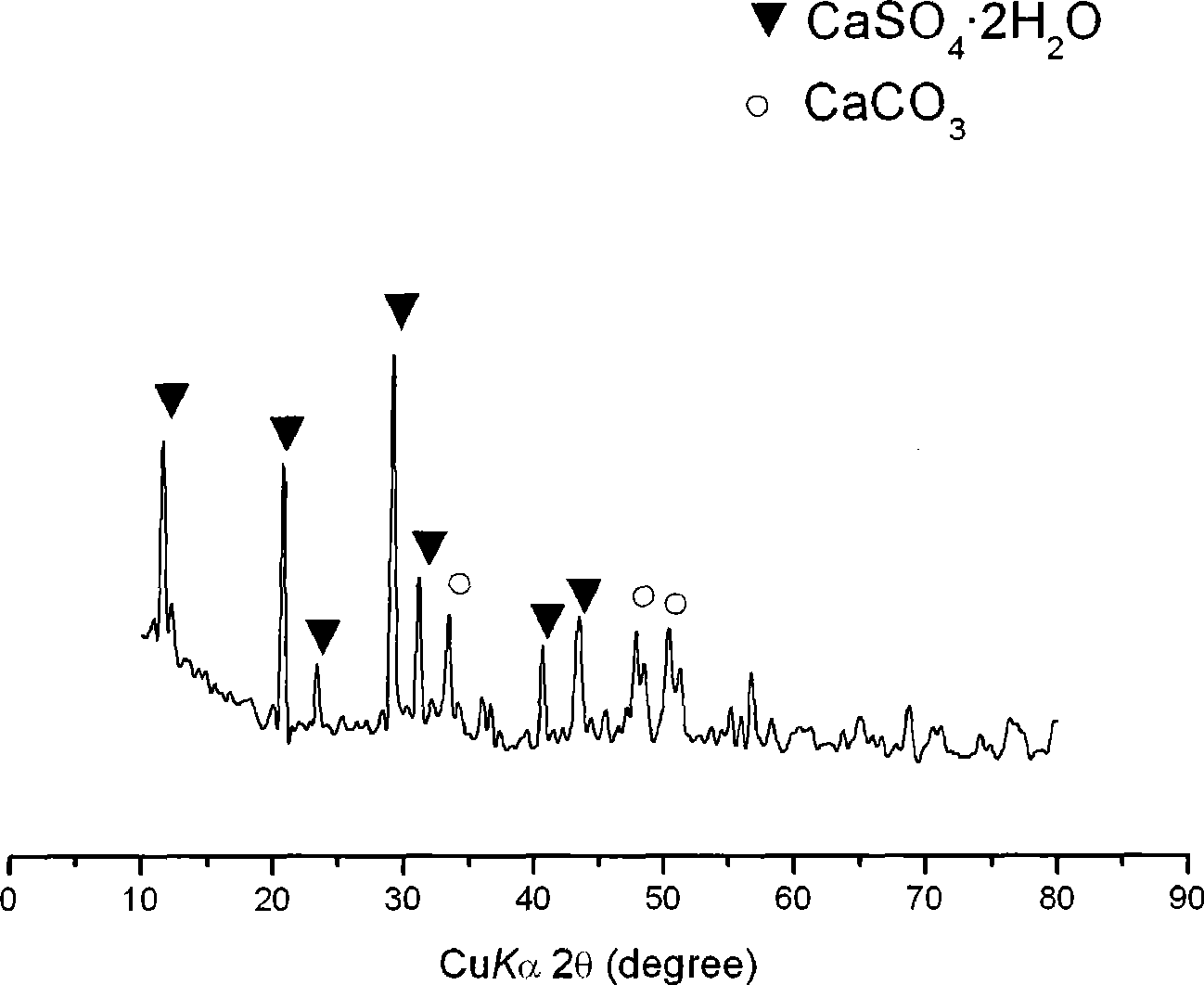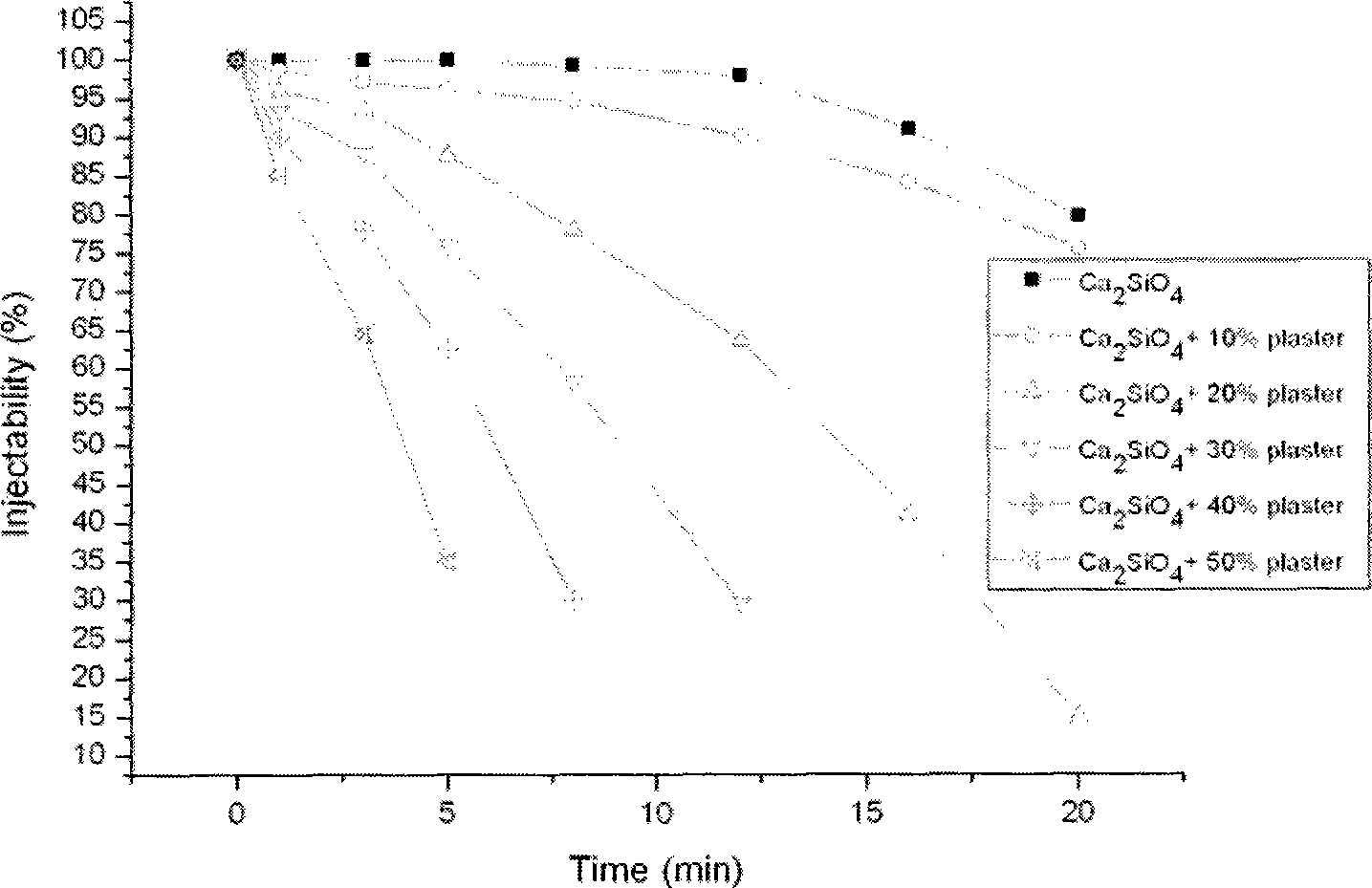Composite self-curing material of dicalcium silicate, preparation and uses thereof
A self-curing technology of dicalcium silicate, which is applied to human hard tissue defect filling and repairing materials. It will be used in the field of dicalcium silicate for a long time, and can solve the problems of lack of biological activity, lack of long-term structural support, and no promotion of bone regeneration. , to achieve the effects of excellent biocompatibility, excellent biological performance and excellent biological activity
- Summary
- Abstract
- Description
- Claims
- Application Information
AI Technical Summary
Problems solved by technology
Method used
Image
Examples
Embodiment 1
[0043] 1) Blending liquid preparation
[0044] Weigh 1.0 g of analytically pure sodium bicarbonate and dissolve it in 99.0 mL of deionized water to obtain a 1.0 wt.% sodium bicarbonate solution, sterilize, seal it in a sterile bottle, and set aside.
[0045] 2) Preparation of dicalcium silicate / calcium sulfate hemihydrate composite self-curing material:
[0046] The dicalcium silicate / calcium sulfate hemihydrate composite material powder with a calcium sulfate hemihydrate content of 30wt.% and the blending solution are fully blended for 0.5-1 minute at a ratio of liquid to solid mass ratio of 1.2:1 to obtain micro Dicalcium silicate / calcium sulfate hemihydrate composite self-curing material for invasive treatment. The self-curing material can reach the initial setting in about 20 minutes after being injected into the defect site, the self-curing material slurry can be injected within 15 minutes, the compressive strength of the self-curing material can reach 9.6∽36.0MPa, and t...
Embodiment 2
[0048] 1) Blending liquid preparation
[0049] Weigh 1.0 g of analytically pure sodium bicarbonate and dissolve it in 99.0 mL of deionized water to obtain a 1.0 wt.% sodium bicarbonate solution, sterilize, seal it in a sterile bottle, and set aside.
[0050] 2) Preparation of dicalcium silicate / calcium sulfate hemihydrate composite bone defect filling material:
[0051] The dicalcium silicate / calcium sulfate hemihydrate composite material powder with a calcium sulfate hemihydrate content of 60wt.% and the blending solution are fully blended at a liquid-solid mass ratio of 1.2:1, and injected into the mold for 0.5-1 minute. ℃ and 100% humidity conditions for curing for more than 7 days, after which the dicalcium silicate / calcium sulfate hemihydrate composite material pellets or small discs (C 2 S / plaster Pellets). The compressive strength of the pellets or discs can reach 7.0∽9.0MPa, and the degradation rate can reach more than 80% after 21 days, and has good biological activ...
Embodiment 3
[0053] 1) Preparation of blending solution
[0054] The simulated body fluid is used as the blending solution, and the ion concentration of the simulated body fluid is shown in Table 2 (pH=7.25-7.4):
[0055] Table 2
[0056] Ion species Na + K + Mg 2+ Ca 2+ Cl - HCO 3 - HPO 4 2- ion concentration
(mmol / L) 142.0 5.0 1.5 2.5 148.8 4.2 1.0
[0057] 2) Preparation of Dicalcium Silicate / Calcium Sulfate Hemihydrate Composite Degradable Material
[0058] Fully blend the dicalcium silicate / calcium sulfate hemihydrate composite material powder with a calcium sulfate hemihydrate content of 5-95wt.% and the blending solution at a ratio of 0.8-1.2:1 by liquid-solid mass ratio for 0.5-1 minute, inject The mold was cured for more than 7 days at 37°C and 100% humidity, and then the dicalcium silicate / calcium sulfate hemihydrate composite material pellets (C 2 S / plaster Pellets). The compressive strength of the pellets can reach 7.3∽37....
PUM
| Property | Measurement | Unit |
|---|---|---|
| particle diameter | aaaaa | aaaaa |
| compressive strength | aaaaa | aaaaa |
| compressive strength | aaaaa | aaaaa |
Abstract
Description
Claims
Application Information
 Login to View More
Login to View More - R&D
- Intellectual Property
- Life Sciences
- Materials
- Tech Scout
- Unparalleled Data Quality
- Higher Quality Content
- 60% Fewer Hallucinations
Browse by: Latest US Patents, China's latest patents, Technical Efficacy Thesaurus, Application Domain, Technology Topic, Popular Technical Reports.
© 2025 PatSnap. All rights reserved.Legal|Privacy policy|Modern Slavery Act Transparency Statement|Sitemap|About US| Contact US: help@patsnap.com



